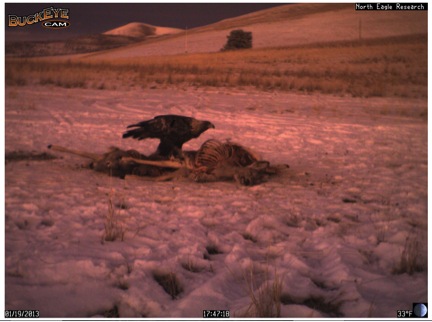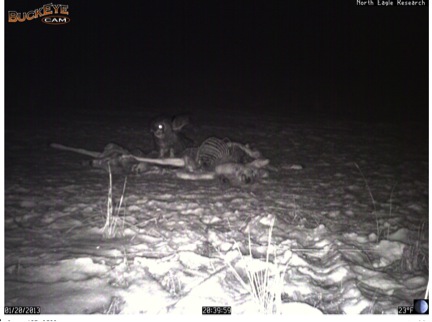
New Eagle Research Gallery
Block title
 By: Kate StoneM.S. Avian Scientist
By: Kate StoneM.S. Avian ScientistAvian Ecology
We seek to understand how birds use the habitats available and how that will change as we work to create more diverse plant communities. We also host researchers that document migrations of raptors and songbirds across MPG.
In this section of the research pages, you will find links to reports and updates from all the researchers involved with avian ecology, posted chronologically. The links will show you more in-depth reports on our findings. The three main projects covered here are:
Songbird Counts- A grid of sampling points covers MPG with 560 points. We visit each point 3 times a year, once in winter and twice during the songbird breeding season. We record, by ear or by sight, all the birds near that point for 10 minutes.
Songbird Banding- The University of Montana Bird Ecology Lab, UMBEL, runs several trapping stations at MPG as part of their regional songbird monitoring program. UMBEL sets up very fine nets that are nearly invisible to birds in brushy habitats. Songbirds fly into the nets and become entangled. The researchers take the birds from the nets and affix a numbered band to their leg before releasing them.
Raptor Research- The Raptor View Research Institute monitors raptor populations on MPG and counts raptors that migrate past MPG in the spring and fall. Raptor View researchers have placed transmitters on osprey and golden eagles that use the Bitterroot Valley.
Raptor View Research Institute’s eagle trapping efforts have captured interesting photographs of golden and bald eagles from new “carcass cameras”. Cameras allow the trapping crew to monitor eagle traps and to identify birds with wing tags. This past week, the trapping crew caught an exciting glimpse of a female golden eagle recently trapped and outfitted with a satellite transmitter. Trapping, handling, and the burden of a transmitter, did not keep her from returning to eat at the bait within days of her capture.

We’ve noticed many other creatures making use of the deer and elk carcasses, including this ghostly great horned owl. A great horned owl has snacked on the carcass over the course of several nights in the past week.

This picture appears to show both a golden eagle (foreground) and a great horned owl (background) at the carcass at the same time. What an uncommon combination!

To see birds on the carcasses you can browse the Eagle Research gallery here.

About the AuthorKate Stone
Kate graduated from Middlebury College with a B.A. in Environmental Studies and Conservation Biology in 2000. She pursued a M.S. in Forestry at the University of Montana where her thesis focused on the habitat associations of snowshoe hares on U.S. National Forest land in Western Montana. After completing her M.S. degree in 2003, Kate alternated between various field biology jobs in the summer and writing for the U.S. Forest Service in the winter. Her fieldwork included projects on small mammal response to weed invasions, the response of bird communities to bark beetle outbreaks and targeted surveys for species of concern like the black-backed woodpecker and the Northern goshawk. Writing topics ranged from the ecology and management of western larch to the impacts of fuels reduction on riparian areas.
Kate coordinates bird-related research at the MPG Ranch. She is involved in both original research and facilitating the use of the Ranch as a study site for outside researchers. Additionally, Kate is the field trip coordinator and website manager for the Bitterroot Audubon Society. She also enjoys gardening and biking in her spare time.
Kate coordinates bird-related research at the MPG Ranch. She is involved in both original research and facilitating the use of the Ranch as a study site for outside researchers. Additionally, Kate is the field trip coordinator and website manager for the Bitterroot Audubon Society. She also enjoys gardening and biking in her spare time.


















